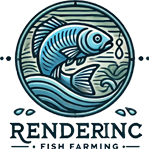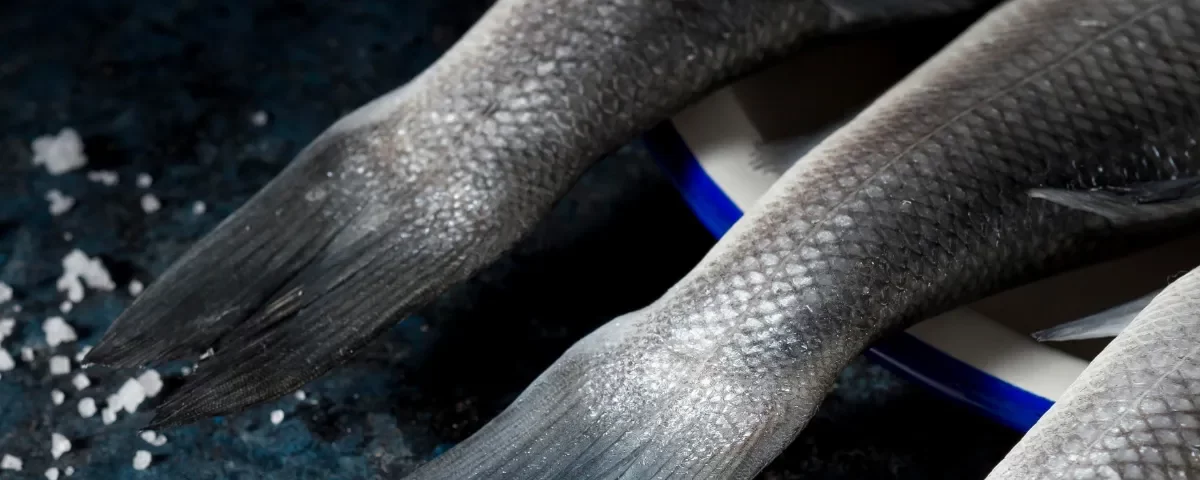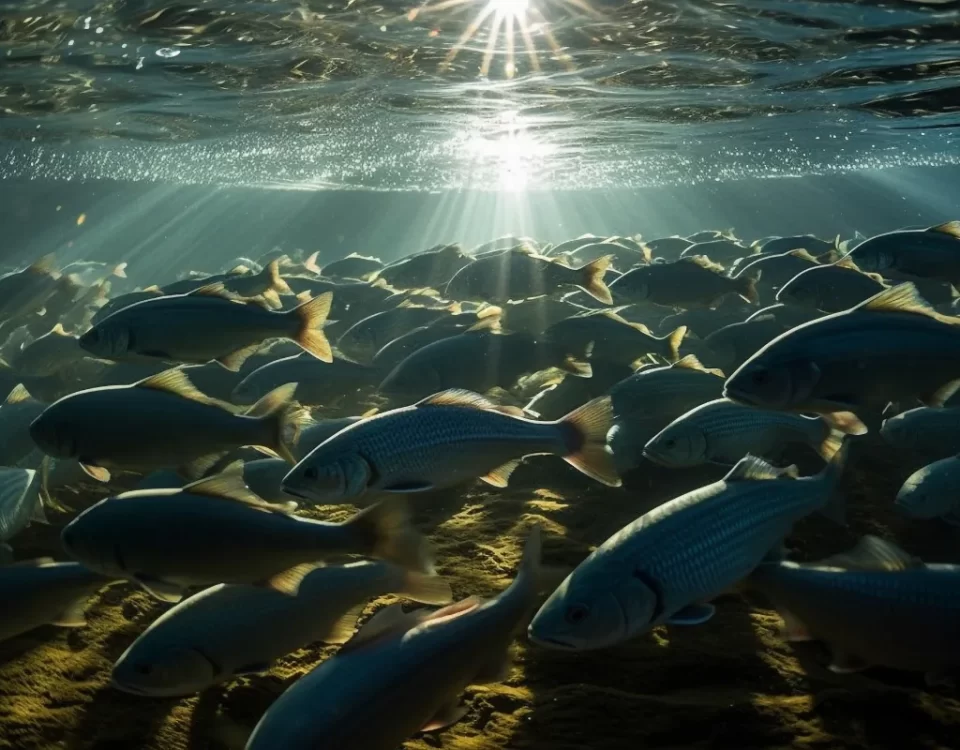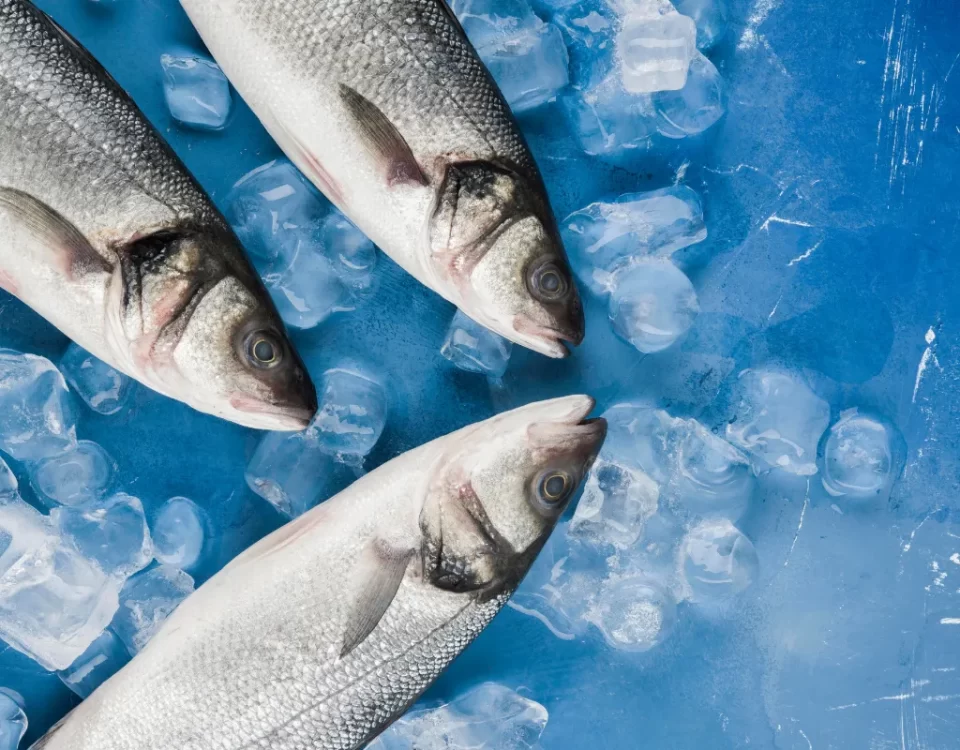The Economics of Fish Farming: Is it Profitable?

The Future of Aquaponics: Integrating Fish Farming with Plant Cultivation
agosto 28, 2024
How Blockchain is Enhancing Transparency in the Aquaculture Industry
agosto 30, 2024The Basics of Fish Farming
Fish farming, also known as aquaculture, is the practice of cultivating fish in controlled environments for commercial purposes. It involves the breeding, rearing, and harvesting of fish in ponds, tanks, or enclosures, with the primary goal of producing fish for human consumption. Fish farming has become a significant sector in the global food industry, providing a sustainable alternative to wild-caught fish.
Definition of Fish Farming
In essence, fish farming is a method of raising fish in an artificial setting, such as ponds, raceways, or tanks, where environmental conditions can be controlled. This allows fish farmers to optimize growth rates, monitor fish health, and regulate feed inputs to ensure efficient production. By mimicking natural habitats and providing adequate nutrition, fish farmers can cultivate a healthy and abundant fish population ready for market.
Different Types of Fish Farming
There are several types of fish farming methods employed worldwide, each with its own set of advantages and challenges. Pond aquaculture is one of the most traditional forms, where fish are raised in freshwater ponds by utilizing natural resources such as sunlight and algae for feed. Cage aquaculture, on the other hand, involves raising fish in floating cages or pens located in natural water bodies like rivers or oceans.
Recirculating aquaculture systems (RAS) have gained popularity in recent years due to their efficiency in water usage and waste management. In RAS, fish are raised in closed systems where water is continuously filtered and recirculated, reducing the need for large water bodies and minimizing environmental impact. Integrated multitrophic aquaculture (IMTA) is another innovative approach that combines different species such as fish, shellfish, and seaweeds to create a sustainable ecosystem.
Overall, the diversity of fish farming methods provides a range of options for farmers to choose from based on factors like species selection, market demand, and environmental considerations. By understanding the basics of fish farming and the different types available, stakeholders can make informed decisions to maximize profitability and sustainability in the industry.
Costs Associated with Fish Farming
When considering the economics of fish farming, one must carefully evaluate the various costs involved in setting up and maintaining a fish farm. There are two main categories of costs to take into account: initial setup costs and ongoing operational costs.
Initial Setup Costs
Initial setup costs are the expenses incurred when establishing a fish farm from scratch. These costs can vary significantly depending on the scale of the operation and the specific requirements of the chosen fish species. Some common components of initial setup costs include:
- Infrastructure: Building ponds or tanks, installing filtration systems, and setting up aeration equipment are essential infrastructure costs that are integral to the success of a fish farm. The quality and capacity of these structures will directly impact the farm’s productivity and efficiency.
- Stocking: Acquiring fish fingerlings or juveniles to populate the farm is another major initial cost. The species of fish chosen will dictate the stocking density and cost per unit, which needs to be carefully calculated to ensure optimal growth and profit potential.
- Equipment: Purchase of specialized equipment such as feeders, netting, water testing kits, and harvesting tools is crucial for the smooth operation of a fish farm. Investing in high-quality equipment can lead to better yields and long-term savings on maintenance and replacement.
Ongoing Operational Costs
Once the fish farm is up and running, there are various ongoing operational costs that need to be managed to ensure its profitability. These costs are recurring and contribute to the day-to-day functioning of the farm. Some key components of ongoing operational costs include:
- Feed: One of the largest ongoing expenses for a fish farm is the cost of feed. Providing a well-balanced and nutritious diet is essential for fish growth and health. The type of feed, feeding frequency, and feeding methods all impact the overall cost of feeding the fish.
- Labor: Labor costs include salaries for farm workers involved in tasks such as feeding, monitoring water quality, maintaining equipment, and harvesting. Skilled labor is crucial for the success of a fish farm and should be factored into the operational budget.
- Utilities: Expenses related to water and electricity usage are significant operational costs for a fish farm. Monitoring and optimizing water quality, temperature, and oxygen levels require energy-intensive equipment that contributes to utility bills.
In conclusion, understanding and effectively managing both initial setup costs and ongoing operational costs is essential for evaluating the profitability of fish farming. By carefully budgeting and monitoring expenses, fish farmers can optimize their operations and maximize returns on their investment.
Revenue Generation in Fish Farming
When delving into the economics of fish farming, understanding the sources of revenue is crucial for success in the industry. Fish farmers have multiple avenues to generate income, with the primary sources including the sale of farmed fish, value-added fish products, and related services.
Sources of Revenue
Sale of Farmed Fish
The most direct source of revenue for fish farmers is the sale of the fish they cultivate. Depending on the species being farmed, fish can be sold live, fresh, frozen, or processed into value-added products such as fillets, smoked fish, or fish jerky. The pricing of farmed fish can vary based on factors such as species, size, quality, and market demand.
Value-Added Fish Products
To increase profit margins, many fish farmers choose to process their harvested fish into value-added products. By transforming raw fish into products like fish fillets, smoked fish, fish burgers, or fish oil, farmers can target niche markets and command higher prices. This diversification of products can help fish farmers cater to a broader customer base and capture additional revenue streams.
Related Services
In addition to selling fish and fish products, fish farmers can also generate revenue through related services such as aquaculture consultancy, pond construction and maintenance, fish feed supply, and ecotourism activities. Offering these services not only brings in additional income but also helps fish farmers establish themselves as experts in the field, attracting more customers and increasing their market share.
Market Demand for Farmed Fish
Understanding the market demand for farmed fish is essential for fish farmers to make informed decisions about production levels, pricing strategies, and target markets. The demand for farmed fish is influenced by factors such as consumer preferences, health trends, sustainability concerns, and competition from wild-caught fish.
Consumer Preferences
Consumer preferences play a significant role in shaping the market demand for farmed fish. Factors such as taste, texture, appearance, and nutritional value can sway consumers towards farmed fish over wild-caught alternatives. As consumer awareness of the benefits of farmed fish grows, the market demand is expected to rise, creating opportunities for fish farmers to capitalize on this trend.
Health Trends
With a growing focus on health and wellness, the demand for healthy food options, including fish, has been on the rise. Farmed fish are often perceived as a safer and more sustainable choice compared to wild-caught fish, driving increased demand from health-conscious consumers. Fish farmers can leverage this trend by promoting the health benefits of their products and targeting health-focused market segments.
Sustainability Concerns
Concerns over the depletion of wild fish stocks and environmental sustainability have led consumers to seek out ethically and sustainably produced fish. This has created a market demand for responsibly farmed fish that adhere to strict environmental standards and ethical practices. Fish farmers who can demonstrate their commitment to sustainability stand to benefit from the growing demand for eco-conscious seafood options.
Competition from Wild-Caught Fish
Despite the rise in demand for farmed fish, wild-caught fish remain a formidable competitor in the market. Factors such as price, taste, and perceived quality can influence consumers’ choices between farmed and wild-caught fish. To stay competitive, fish farmers must differentiate their products, highlight the advantages of farmed fish, and address any consumer concerns about quality or sustainability.
In conclusion, revenue generation in fish farming is a multifaceted process that involves leveraging various sources of income and understanding market demand dynamics. By diversifying revenue streams, adapting to changing consumer preferences, and differentiating their products, fish farmers can maximize their profitability and establish a strong presence in the competitive fish farming industry.
Factors Impacting Profitability
When it comes to the economics of fish farming, several key factors come into play that can significantly impact the overall profitability of the operation. Understanding and effectively managing these variables is essential for fish farmers looking to optimize their financial success.
Environmental Factors
Environmental factors play a crucial role in the profitability of fish farming operations. Factors such as water quality, temperature, and oxygen levels can directly impact the health and growth of the fish. Poor water quality can lead to stress and disease among the fish, ultimately affecting their productivity and survival rates. Additionally, extreme weather events, such as droughts or heavy rainfall, can disrupt farming operations and lead to financial losses.
Disease Management
Disease management is another critical aspect of fish farming profitability. Disease outbreaks can spread rapidly among the fish population, causing significant mortalities and reducing overall yields. Implementing effective biosecurity measures, such as regular health checks, quarantine procedures, and vaccination programs, is essential for preventing and controlling diseases in fish farms. Investing in disease management practices may incur initial costs, but the long-term benefits in terms of reduced losses and increased productivity can significantly enhance profitability.
Feed Costs
Feed costs represent a substantial portion of the operating expenses in fish farming. The type and quality of feed used can impact the growth rates and feed conversion efficiency of the fish. Rising feed prices can also put pressure on profit margins, making it essential for fish farmers to source cost-effective feed options without compromising on nutritional quality. Implementing feeding strategies that optimize feed utilization and minimize waste can help reduce overall feed costs and improve profitability.
Market Demand and Price Volatility
Market demand and price volatility are external factors that can influence the profitability of fish farming operations. Fluctuations in market demand for fish products can impact sales volumes and prices, affecting overall revenue. Furthermore, price volatility in the fish market can introduce uncertainties in revenue forecasting and profit margins. To mitigate the impact of market fluctuations, fish farmers may consider diversifying their product offerings, establishing long-term supply contracts, or exploring value-added processing options to capture higher margins in the market.
Case Studies of Profitable Fish Farms
Success Stories in the Fish Farming Industry
In the realm of fish farming, there exist notable success stories that showcase the profitability of this flourishing industry. One such example is the Pacifico Aquaculture, a leading fish farming company based in Baja California, Mexico. With a focus on sustainable practices and high-quality production, Pacifico Aquaculture has effectively positioned itself as a key player in the market. By leveraging cutting-edge technologies and prioritizing environmental stewardship, they have not only achieved significant financial success but also garnered widespread acclaim for their commitment to ethical fish farming practices.
Another inspiring success story is that of Tasmanian Atlantic Salmon, a renowned fish farming enterprise hailing from the pristine waters of Tasmania, Australia. Through meticulous attention to detail in cultivation and a relentless pursuit of excellence, Tasmanian Atlantic Salmon has established itself as a premier supplier of top-tier salmon products. By adhering to stringent quality standards and embracing innovation in every aspect of their operations, this fish farm has not only achieved remarkable profitability but has also set a gold standard for sustainable aquaculture practices in the industry.
Key Strategies for Profitability
When delving into the secrets of profitable fish farming, several key strategies emerge as crucial pillars for success. Firstly, quality feed plays a pivotal role in ensuring the health and growth of fish stocks. By investing in high-quality, nutritionally balanced feed, fish farms can optimize their yields and enhance the market value of their products. Additionally, efficient water management is vital for maintaining optimal conditions within aquaculture systems. Proper filtration, aeration, and monitoring of water parameters are essential for creating a conducive environment for fish growth and mitigating risks of disease outbreaks.
Furthermore, market diversification is a savvy strategy for fish farms looking to bolster their profitability. By exploring niche markets, establishing direct-to-consumer sales channels, or developing value-added products, fish farmers can tap into new revenue streams and differentiate themselves in a competitive landscape. Lastly, strategic partnerships with suppliers, distributors, or research institutions can provide valuable resources and expertise to drive innovation and unlock new growth opportunities for fish farms. By forging strong collaborations within the industry, fish farmers can position themselves for long-term success and sustainable profitability.
Challenges and Risks in Fish Farming
Fish farming, like any other agricultural endeavor, is not without its challenges and risks. Understanding and navigating these obstacles is crucial for fish farmers aiming to build a sustainable and profitable operation.
Market Fluctuations
One of the primary challenges in fish farming is market fluctuations. Demand for fish products can vary based on factors such as seasonality, consumer preferences, and global economic conditions. Fluctuations in market prices can significantly impact a fish farmer’s profitability, making it essential to adapt to changing market dynamics. Diversifying the product range or establishing stable contracts with buyers can help mitigate the risks associated with market volatility.
Regulatory Challenges
Fish farming is subject to regulatory challenges that vary from region to region. Compliance with government regulations regarding water quality, effluent discharge, fish health, and food safety is imperative for a successful fish farming operation. Navigating the complex regulatory landscape can be time-consuming and costly, requiring fish farmers to stay informed and maintain strict adherence to standards. Failure to comply with regulations can result in fines, penalties, or even the closure of the farm.
Environmental Concerns
Environmental concerns pose another significant risk for fish farmers. Intensive fish farming practices can lead to pollution of water bodies, spreading of diseases to wild fish populations, and disruption of local ecosystems. Sustainable aquaculture practices, such as proper waste management, responsible feed sourcing, and habitat conservation, are essential to minimize the environmental impact of fish farming. Addressing environmental concerns not only ensures the long-term viability of the farm but also enhances its reputation among environmentally conscious consumers.
In conclusion, fish farming presents a unique set of challenges and risks that require careful management and proactive strategies. By addressing market fluctuations, regulatory challenges, and environmental concerns, fish farmers can navigate these obstacles effectively and build a resilient and profitable business in the aquaculture industry.
Sustainability in Fish Farming
In the realm of fish farming, the concept of sustainability looms large as a critical factor in ensuring the long-term viability of the industry. The importance of adopting sustainable practices cannot be overstated, as it involves not only meeting the current demands for fish products but also safeguarding the health of ecosystems and preserving resources for future generations. By embracing sustainable methods, fish farmers can play a pivotal role in maintaining the delicate balance of our aquatic environments.
Importance of Sustainable Practices
Embracing sustainable practices in fish farming entails a multifaceted approach that encompasses various aspects of operations. From minimizing waste and pollution to promoting responsible water usage and ensuring the well-being of fish stocks, sustainable practices are designed to harmonize the needs of the industry with the imperatives of environmental conservation. By reducing reliance on harmful chemicals and antibiotics, fish farmers can cultivate a healthier environment for aquatic life while mitigating the risks of contamination and disease outbreaks.
Economic Benefits of Sustainability
While the ethical considerations of sustainability are paramount, there are also compelling economic benefits to be derived from adopting such practices in fish farming. Sustainable operations often lead to increased efficiency, as streamlined processes and reduced resource consumption can result in cost savings for farmers. Moreover, embracing sustainability can enhance the reputation of fish farms, attracting environmentally conscious consumers who are willing to pay a premium for products that are produced in an eco-friendly manner. By investing in sustainable practices, fish farmers can not only contribute to the preservation of our natural ecosystems but also bolster their bottom line in the long run.
In conclusion, sustainability in fish farming is not merely a lofty ideal but a pragmatic necessity for the industry’s continued prosperity. By recognizing the importance of sustainable practices and capitalizing on the economic benefits they offer, fish farmers can pave the way for a more sustainable future while reaping the rewards of their commitment to environmental stewardship.
Future Outlook for Fish Farming
The fish farming industry is constantly evolving, driven by various emerging trends that shape its future landscape. One prominent trend is the increasing adoption of sustainable practices within aquaculture. As consumers become more conscious of the environmental impact of their food choices, there is a growing demand for responsibly farmed seafood. This shift towards sustainability is driving innovation in fish farming methods, such as the development of recirculating aquaculture systems that minimize water usage and waste production.
Moreover, technological advancements are playing a crucial role in shaping the future of fish farming. Automation and data analytics are being integrated into aquaculture operations, allowing farmers to optimize feeding schedules, monitor water quality in real-time, and improve overall production efficiency. These technological innovations not only enhance productivity but also help reduce operational costs, making fish farming a more economically viable venture in the long run.
Potential for Growth and Innovation
The fish farming industry holds tremendous potential for growth and innovation in the coming years. With global demand for seafood on the rise, aquaculture presents a sustainable solution to meet this growing need. As traditional fishing methods face challenges such as overfishing and depleting wild fish stocks, aquaculture offers a reliable and scalable alternative to supplement seafood supply.
Furthermore, niche markets such as organic and premium seafood products present lucrative opportunities for fish farmers to diversify their offerings and capture higher margins. By focusing on quality, traceability, and product differentiation, fish farmers can tap into niche segments of the market and command premium prices for their products. This emphasis on quality and sustainability not only appeals to environmentally conscious consumers but also strengthens the economic sustainability of fish farming operations.
Recap of Key Points
In summary, the future outlook for fish farming is promising, driven by emerging trends such as sustainability, technological innovation, and the increasing global demand for seafood. These developments are reshaping the industry landscape and opening up new opportunities for fish farmers to thrive in a competitive market environment. By embracing sustainable practices, adopting cutting-edge technologies, and tapping into niche markets, fish farmers can position themselves for long-term success and profitability in the evolving aquaculture sector.
Final Thoughts on the Profitability of Fish Farming
As we look ahead to the future of fish farming, it is clear that the industry’s potential for growth and innovation offers a solid foundation for profitability. By staying abreast of emerging trends, leveraging technological advancements, and adapting to changing consumer preferences, fish farmers can navigate the complexities of the market and capitalize on the economic opportunities that aquaculture presents. While challenges may arise, the strategic implementation of sustainable practices and a focus on quality can ensure that fish farming remains a profitable and sustainable venture in the years to come.

Michael Rivers is an experienced aquaculture enthusiast with over a decade of hands-on knowledge in fish farming and sustainable aquatic systems. Passionate about promoting eco-friendly practices, he shares his expertise on fish breeding, water management, and the latest advancements in aquaculture technology. Through his blog, Michael aims to help both beginners and seasoned fish farmers achieve success in their ventures while contributing to the growth of sustainable food production.




